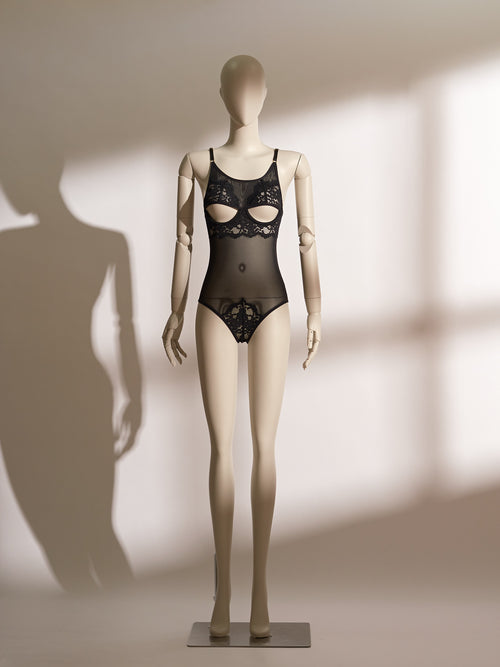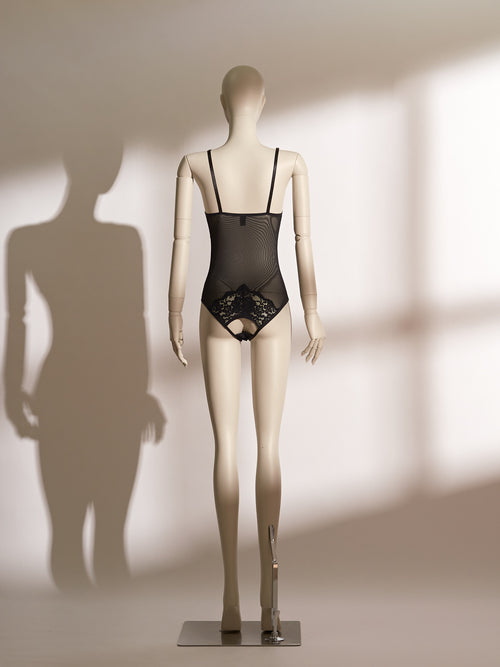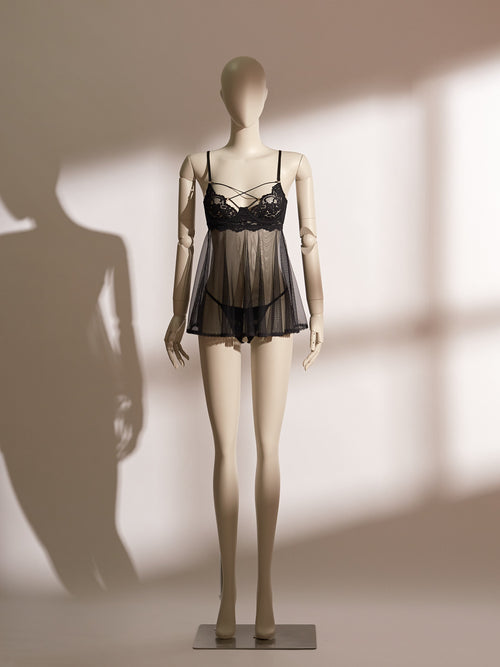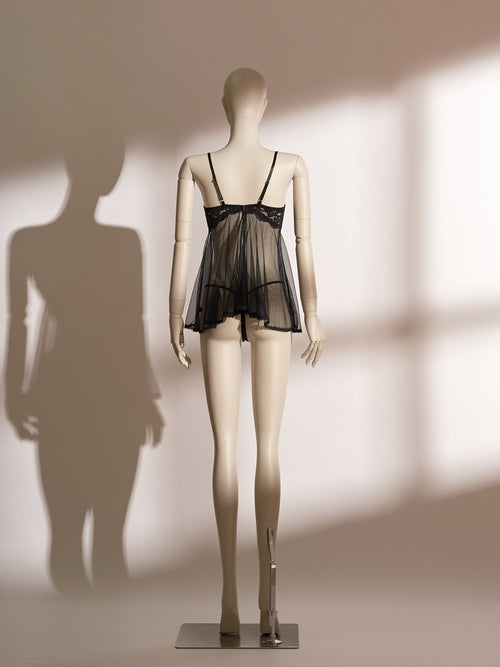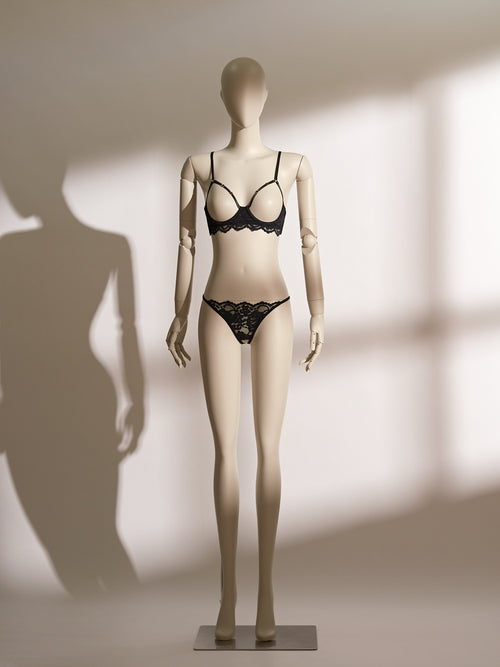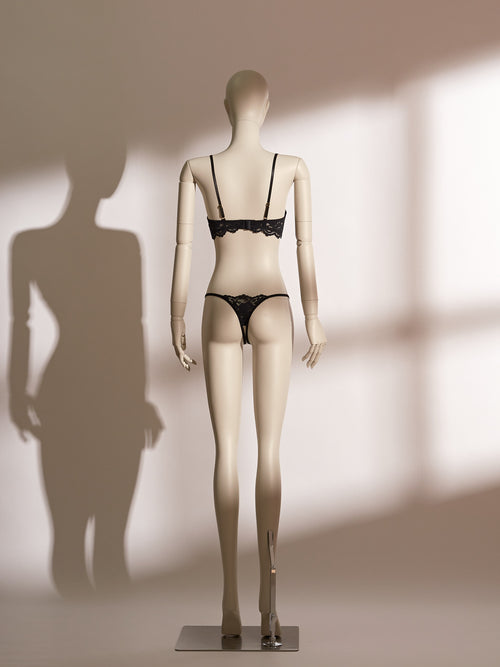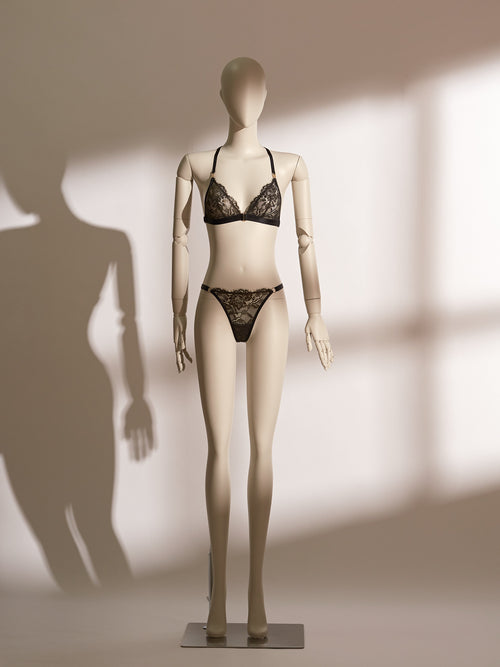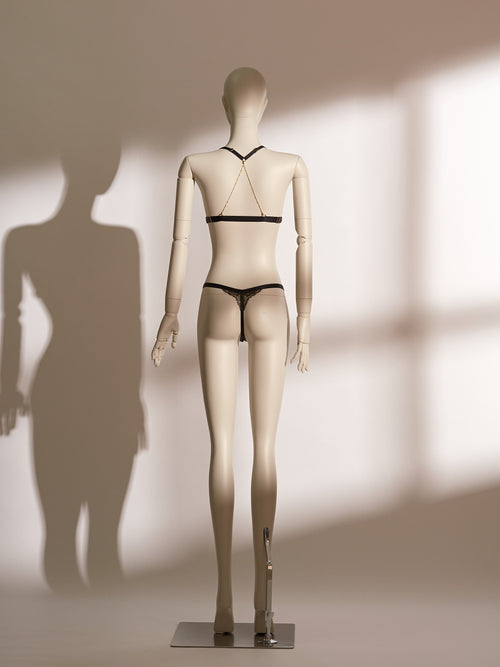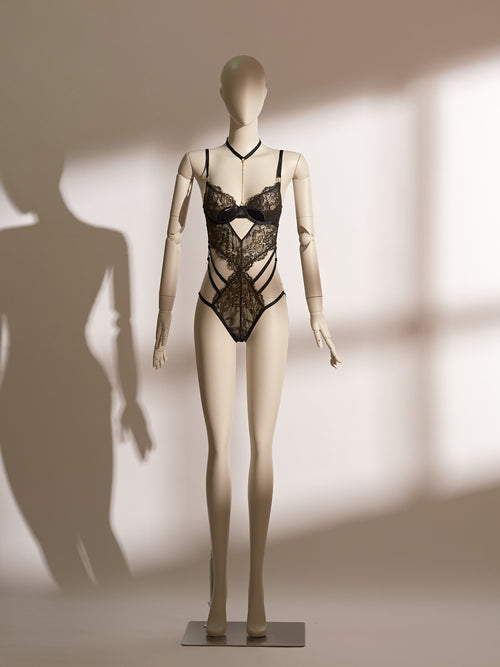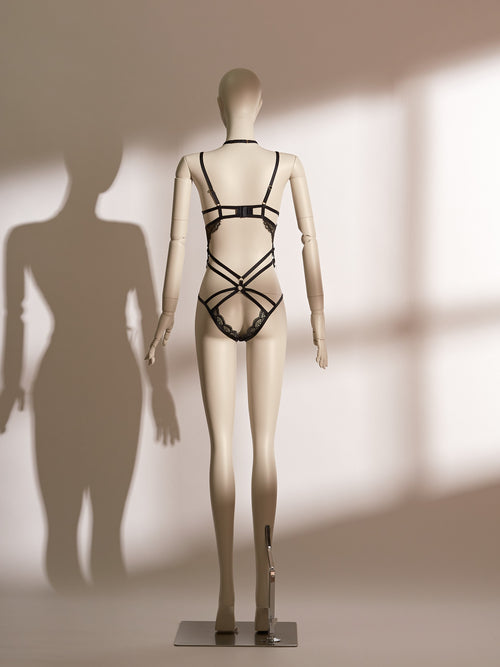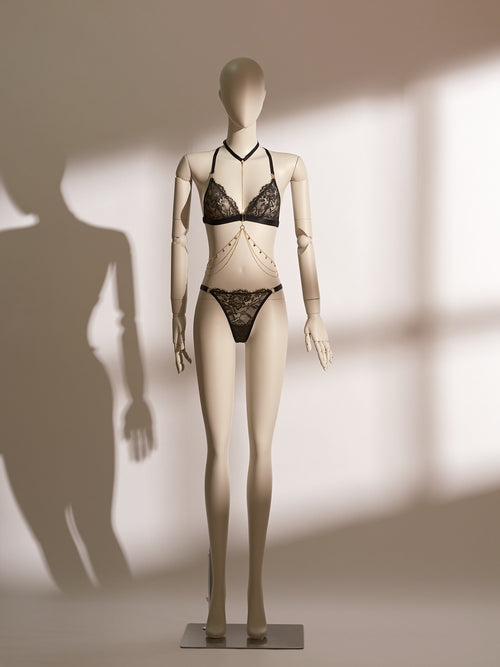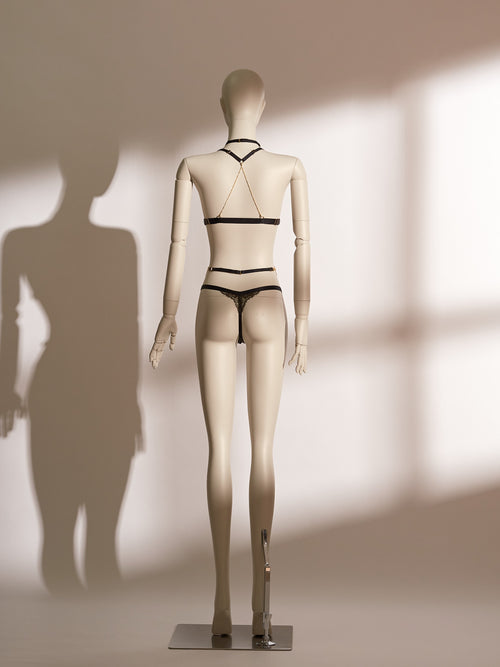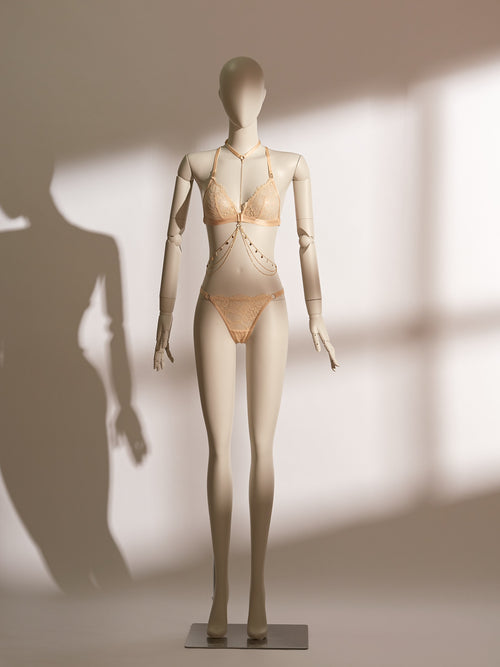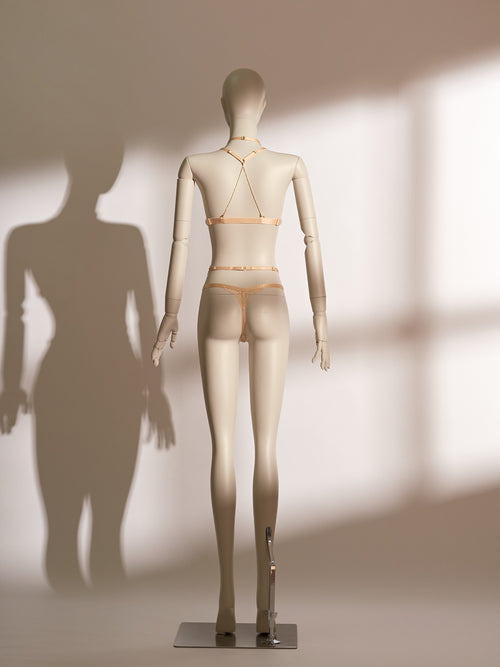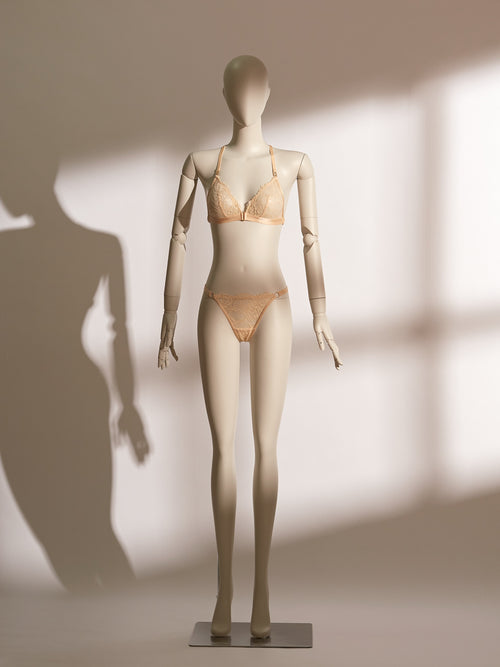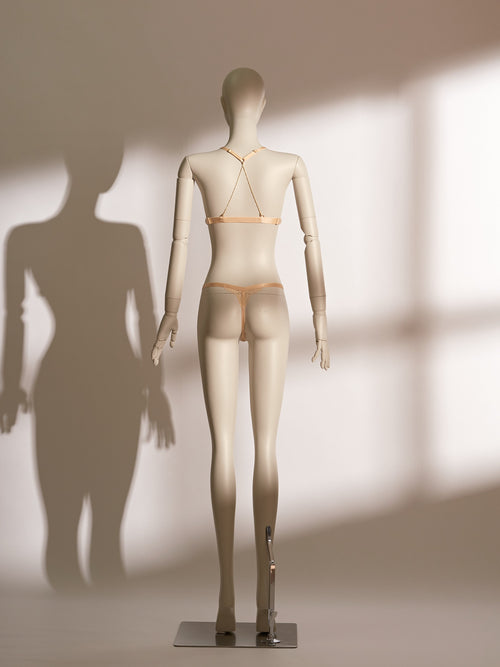Welcome to our store
Not all mesh is created equal, and not all “sustainability” is what it claims to be.
😵💫 When "Green" Becomes the New Beige
Sustainability is the new lingerie lace — everyone’s using it to dress up their brand, but very few are actually wearing it well.
You’ve seen it. “Recycled lace,” “low-impact dyes,” “consciously made.” The language is seductive, the visuals dreamy, and the promises... vague. The rise of eco-labeled lingerie was supposed to signal a shift in the industry. But instead, it's become just another branding trick — especially in the realm of sexy lingerie, where real environmental consideration often stops at the photoshoot backdrop.
So here’s a question no one wants to ask out loud:
Can ouvert lingerie — sheer, bold, playful, erotic — actually be sustainable?
Let’s talk about it.
🧵 Recycled Lace and Other Pretty Lies
Start with the facts: most sexy lingerie, especially in the “fast-fashion fantasy” category, is built for one-time wear. The fabrics are delicate but not durable, the cuts are made for photographs not comfort, and the price points are so low they scream: someone didn’t get paid fairly.
Brands will often slap a “sustainable” tag on a product because it contains 5% recycled fibers. Maybe the hang tag is made of seed paper. Maybe the polybag is biodegradable (even if the product inside disintegrates in the wash). But if the product can't last, doesn’t fit, or feels like plastic wrap, it’s not sustainable — it’s disposable in disguise.
Especially in ouvert lingerie — with its cut-outs, metal rings, delicate trims — bad construction isn’t just uncomfortable. It’s unethical. Because you’re encouraging consumption that feels high-value but burns fast.
✂️ The Real Sustainability Starts in Design
Real sustainability in lingerie is about design, not slogans. A well-constructed ouvert piece can be worn again and again, layered with outerwear, styled as statement fashion — or simply enjoyed privately without falling apart.
In our studio, we work with durable mesh, high-elastane blends, and precision cut lines that resist fraying. A bodysuit with a crotchless cut or an open-back thong still deserves to last. Our use of reinforced elastic edges, adjustable straps, and modular suspender points aren’t gimmicks — they’re sustainability in motion.
A thong that fits like a glove and holds its shape after ten wears is more “eco” than a crinkly “green” piece from a brand you’ll forget by next month.
Examples from our collection:
- The Infernal Grace Ouvert Bodysuit, where black mesh and velvet harnesses are not only eye-catching, but also stitched for real wearability.
- The Valentina Noir Teddy, combining timeless open-cut elegance with gilded threading that doesn’t rub off or unravel.
- The Celestial Chains Black Bralette Set, a perfect example of modern sensuality built on comfort and adjustability.
🧍♀️ Sustainability Is a Labor Value
Here’s what gets lost in almost every eco-marketing campaign: people make these products.
True sustainability doesn’t just start with materials — it starts with valuing craftsmanship, hands-on technical work, and decent labor conditions. That’s especially true in sexy lingerie, where tailoring around curves, layering sheer fabrics, and hand-placing lace panels are all high-skill tasks. You can’t fake this with a spreadsheet or a laser cut.
At Mismuse, our manufacturing roots go back decades — we’re not just imagining a more responsible future; we’ve lived it, stitch by stitch. We know that when you undervalue labor, you undervalue the product — and the person wearing it.
Australia’s future lies in lightweight, design-driven manufacturing — not just reshoring for headlines, but building a creative industry that treats lingerie-making as skilled art, not factory filler.
🧠 How to Shop Smart in the Ouvert Market
Here’s a quick guide for discerning, future-focused shoppers:
🚩 Red flags:
- “Eco” products with no transparency on actual materials
- Buzzwords like “plant-based” or “green touch” that say nothing
- Ultra-cheap ouvert lingerie made in huge volumes — it won’t last and it won’t serve you
✅ Green lights:
- Named materials: polyamide blends, bamboo viscose, GRS-certified elastane
- Adjustable components for long-term wearability
- Reinforced stress points (especially around openings, rings, and straps)
- Modular or layering-friendly designs — because the more ways you wear it, the more sustainable it becomes
🩱 Pieces That Prove the Point
Here are a few examples of ouvert lingerie that walk the talk:
-
Infernal Grace Ouvert Bodysuit
With its thoughtful construction, this piece doesn’t just whisper temptation — it survives it. -
Esmé Emerald Teddy
Strong yet supple, this bodysuit blends vibrant sensuality with long-lasting, breathable mesh. -
Flame Bralette Set Bodychain
Metal detail meets refined structure. Designed for longevity and impact.
🧵 Sexy. Smart. Sustainable.
We believe sustainability isn’t about guilt or greenwashed campaigns. It’s about respect — for your body, your money, and the people behind the seams.
The sexiest lingerie isn’t the one with the loudest label. It’s the one you reach for again and again — because it fits, it feels good, and it was made with intention.
And yes, even an open thong can be part of that story.
Want to see what sustainable sexy really looks like?
Explore our ouvert lingerie collection — and find pieces that last longer, feel better, and actually respect your desire and your values.




